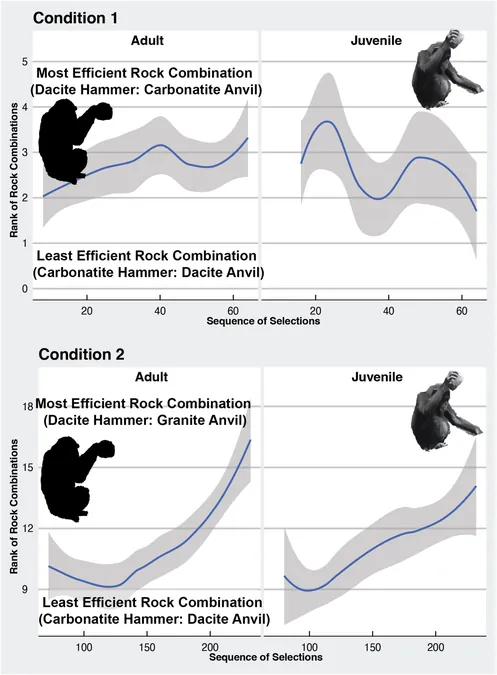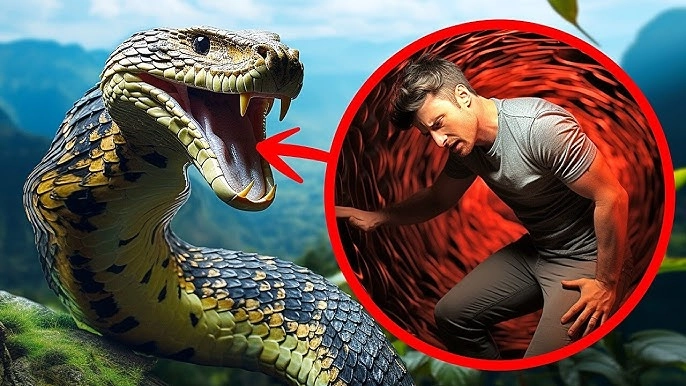
Chimpanzees Showcase Tool Selection Skills Similar to Our Ancient Ancestors!
2025-01-03
Author: Siti
Chimpanzees Showcase Tool Selection Skills Similar to Our Ancient Ancestors!
In a groundbreaking study published in the Journal of Human Evolution, an international consortium of paleobiologists, anthropologists, and behavioral scientists has uncovered fascinating evidence suggesting that the stone tool selection methods of modern chimpanzees may closely mirror those used by ancient human ancestors. This insightful research reveals intriguing parallels in the cognitive processes behind tool selection, providing a glimpse into the evolutionary past of our hominin relatives.
The oldest known stone tools are attributed to Oldowan hominins, with some dating back around 2.5 million years. These early humans intentionally selected specific rocks to use as chopping, scraping, and cutting instruments, indicating not only a deliberate thought process but also the transmission of knowledge through generations. This foundational understanding of tool use directly paves the way for advancements in the evolutionary lineage that eventually led to modern humans.
In their meticulous research, the team turned their attention to modern chimpanzees, curious if they would exhibit similar patterns of stone selection. Their investigation focused on how chimps choose rocks for nut-cracking, a skill critical to their foraging success and survival in the wild.
Chimpanzees utilize two distinct tools for this task: a hammer and an anvil. The chimp uses the hammer, typically a heavier rock, to strike a nut resting on the anvil, selecting stones based on their functional properties. The researchers discovered that chimps prefer harder, heftier stones for hammers, while opting for more resilient, sturdier rocks as anvils that afford greater stability and minimize the chance of nuts being scattered during the cracking process.
The study involved extensive observations where researchers provided chimps with pre-measured rocks, exploring their elasticity, hardness, rebound during strikes, while also cataloging their size, weight, and shape. By closely monitoring the chimps' selections and the effectiveness of their chosen tools, the scientists found that the chimps relied on mechanical properties rather than aesthetic appeal—a striking similarity to the considerations ancient hominins likely made.
Moreover, the research indicated that younger chimps often gravitated toward tools previously used by their more experienced counterparts, suggesting a learned behavior that reflects a social learning aspect in their tool-selection process. This revelation adds weight to the idea that tool choice could be a cultural trait passed down within chimpanzee communities, much like it was among early humans.
These findings not only enhance our understanding of chimpanzee behavior but also shed light on the evolutionary link between our species and those ancient hominins. The study reinforces the idea that cognitive capabilities related to tool use may have roots that stretch back millions of years, providing invaluable insights into the evolution of intelligence and problem-solving in hominins.
As more studies emerge, the relationship between chimpanzee behavior and early human tool-making traditions becomes increasingly evident, challenging our perception of what sets humans apart in the animal kingdom. The cognitive similarities unveiled in this research could indeed reshape our understanding of the path our ancestors took, offering a mesmerizing glimpse into the intricate tapestry of evolution.
Stay tuned as we continue to unfold the astonishing discoveries that connect us with our distant relatives!


 Brasil (PT)
Brasil (PT)
 Canada (EN)
Canada (EN)
 Chile (ES)
Chile (ES)
 Česko (CS)
Česko (CS)
 대한민국 (KO)
대한민국 (KO)
 España (ES)
España (ES)
 France (FR)
France (FR)
 Hong Kong (EN)
Hong Kong (EN)
 Italia (IT)
Italia (IT)
 日本 (JA)
日本 (JA)
 Magyarország (HU)
Magyarország (HU)
 Norge (NO)
Norge (NO)
 Polska (PL)
Polska (PL)
 Schweiz (DE)
Schweiz (DE)
 Singapore (EN)
Singapore (EN)
 Sverige (SV)
Sverige (SV)
 Suomi (FI)
Suomi (FI)
 Türkiye (TR)
Türkiye (TR)
 الإمارات العربية المتحدة (AR)
الإمارات العربية المتحدة (AR)